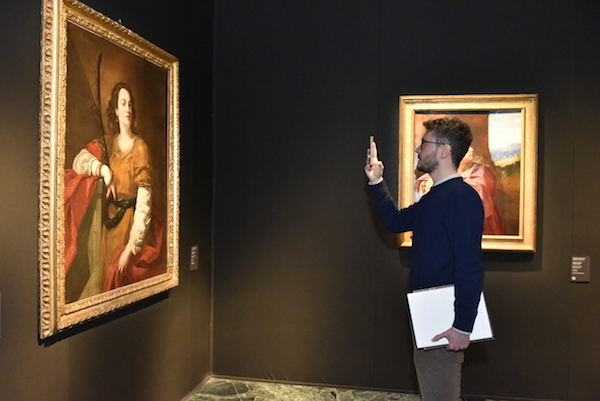
“Artemisia Gentileschi in Naples” Courtesy of the Italian Galleries
It was the summer of 1630 when Artemisia moved to Naples from Venice. At 37, after an adventurous life and a successful career, she found a new home in the capital of the Spanish viceroyalty. The second European metropolis by population after Paris, Naples offered a rather lively cultural life: the memory of Caravaggio was still fresh, while masters such as Josè de Ribera and Massimo Stanzione adorned the city with valuable works. The painter did not lack patrons – from Don Antonio Ruffo of Sicily to King Philip IV of Spain – nor exchanges and collaborations with the best artists present in the city. For the first time Artemisia found herself painting three canvases for the same church, the Cathedral of Pozzuoli in the Rione Terra, and she demonstrated that she knew how to renew her art by responding to the transformations of taste with new subjects. The painter found the Bourbon capital so congenial to her spirit that, except for a short stay in England, she decided to stay there forever.
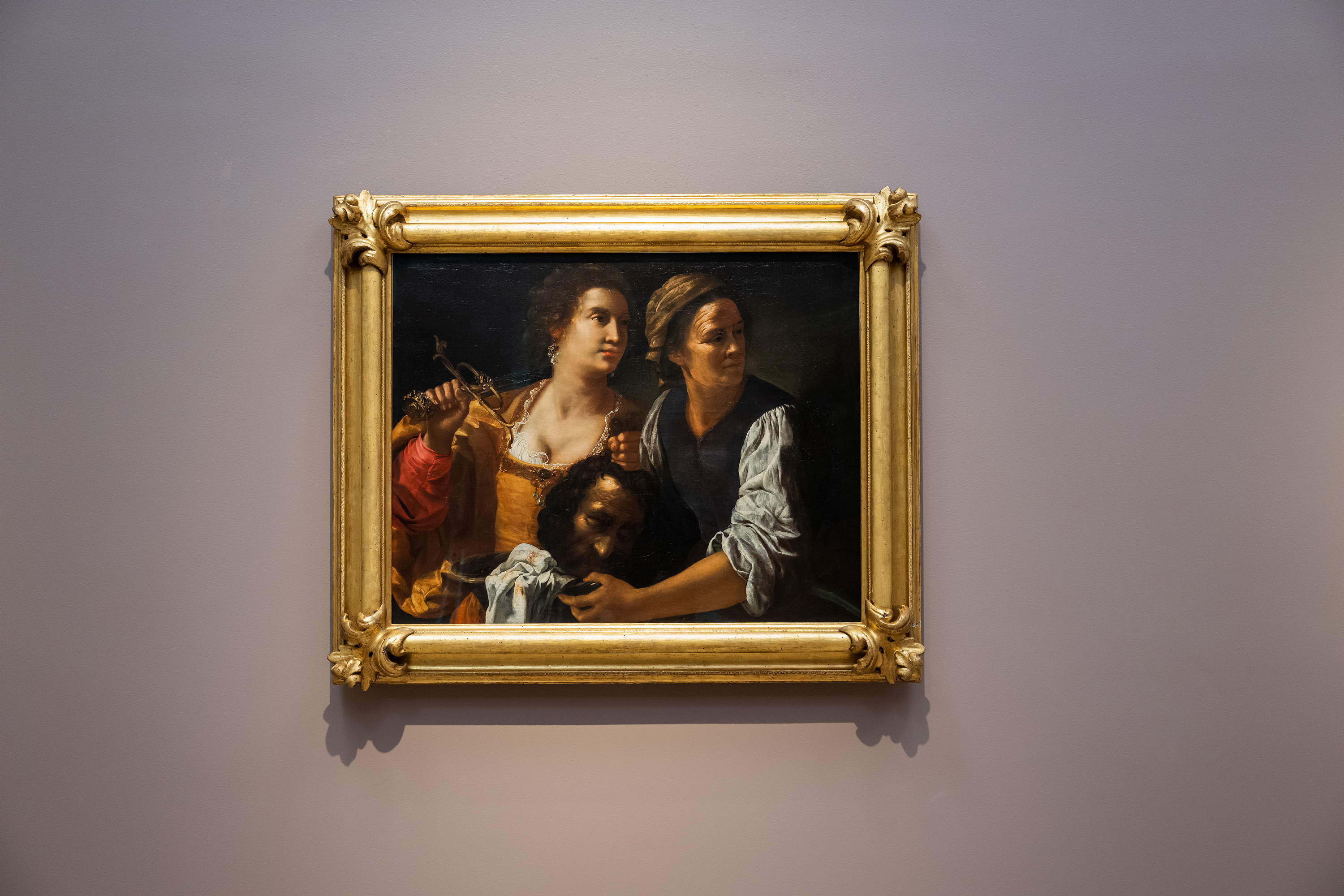
Artemisia Gentileschi, Judith and her handmaid with the head of Holofernes, 1639-1640, Oslo, National Museum | Courtesy National Museum
Incredibly, so far no exhibition had ever investigated Artemisia’s Neapolitan season, a fundamental chapter in her artistic career and by far the longest in terms of time. Curated by Antonio Ernesto Denunzio and Giuseppe Porzio, with the special consultancy of the director of the National Gallery Gabriele Finaldi, the project of the Gallerie d’Italia was born as a deepening of the great show dedicated to the artist in 2020 by the London museum and with the collaboration of the Museum and Real Bosco di Capodimonte, the State Archives of Naples and the University of Studies “L’Orientale”.
In the heart of the Neapolitan city, where Artemisia lived and worked, we will discover 21 paintings by the artist in dialogue with the works of artists active in Naples in the same years, from Massimo Stanzione to Paolo Finoglio, from Francesco Guarino to Andrea Vaccaro, ending with a recently rediscovered painter, “Annella” Di Rosa, the greatest Neapolitan artist in the first half of the seventeenth century, according to tradition, she too was a victim of gender-based violence like Gentileschi.
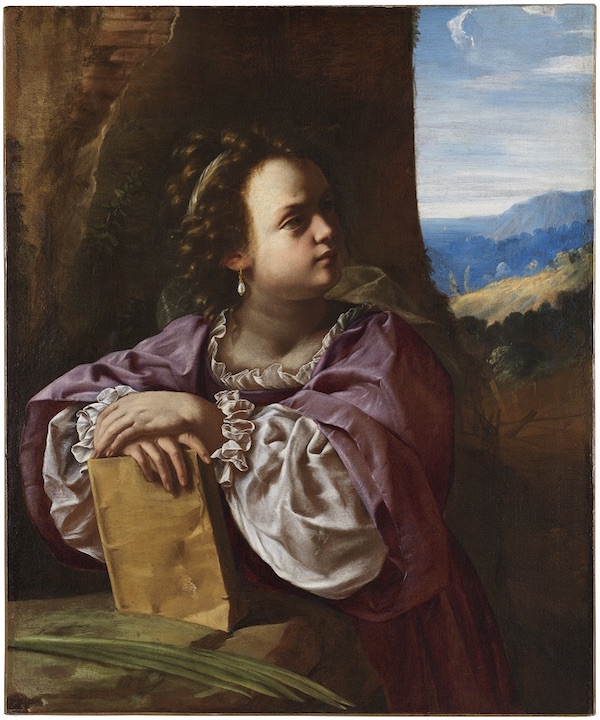
Artemisia Gentileschi (Rome, 1593 – Naples, after 14 July 1654), Santa Caterina d’Alessandria. Oil on canvas, 90 × 75.40 cm. Stockholm, Nationalmuseum, Purchase 2019 Wiros Fund, inv. NM 7538. Photo Cecilia Heisser / Nationalmuseum
The itinerary of the Gallerie d’Italia opens with the Saint Catherine of Alexandria of the National Gallery, Artemisia’s youthful masterpiece, to then immerse herself in the story of her maturity with themes and subjects dear to the painter in her last twenty years of life. We see for the first time the cycle of canvases with Christ and the twelve Apostles commissioned for the Certosa of Seville by the Duke of Alcalà, where the effigy of Jesus painted by Gentileschi is flanked by figures created by Guido Reni, Giovanni Baglione and Battistero Caracciolo. An entire section is then dedicated to the image of Artemisia, with the artist who lends her face to characters from myth and the Holy Scriptures. And there are even self-portraits, such as the one in Palazzo Barberini, which celebrates the painter’s new status immediately after admission to the prestigious Academy of Drawing Arts in Florence.
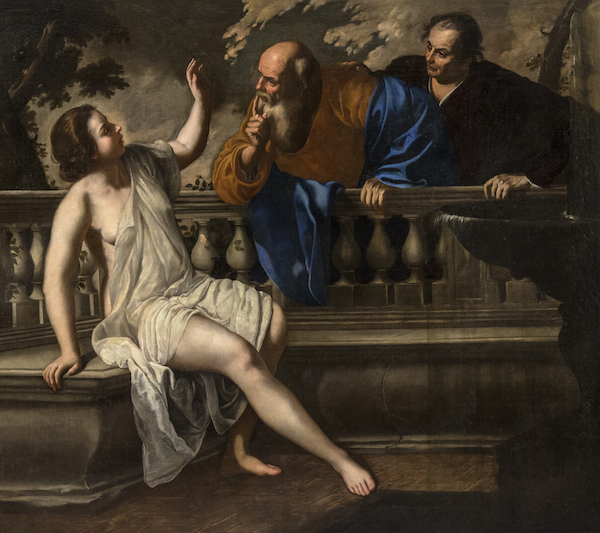
Artemisia Gentileschi (Rome, 1593-Naples, after 14 July 1654), Susanna and the old men. Oil on canvas, 200.5 × 225.5cm. Bologna, National Art Gallery, inv. 6320. Courtesy of the Ministry of Culture–National Art Gallery of Bologna
From the great Neapolitan public commissions, such as theAnnunciation of Capodimonte and the monumental paintings of the Cathedral of Pozzuoli, we move on to the small canvases for private devotion and to the female figures who were one of Gentileschi’s specialties: saints and martyrs, biblical and mythological heroines with a bold character, which the artist describes with expressive naturalism. These include the aforementioned Judith of Oslo and the Saint Catherine of Alexandria of the Nationalmuseum in Stockholm, another absolute novelty for the Italian public.
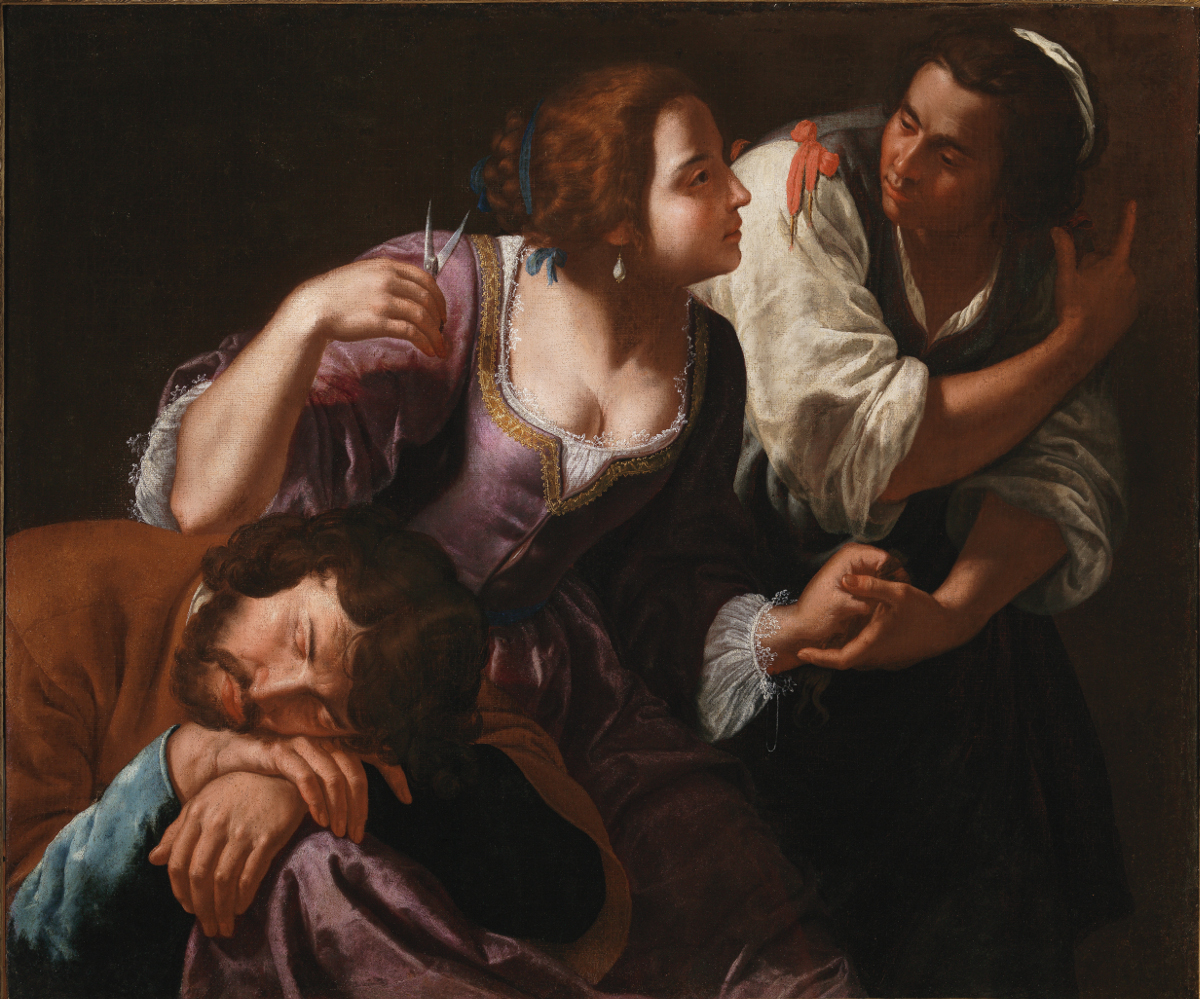
Artemisia Gentileschi, Samson and Delilah, 1630 ca, Naples, Intesa Sanpaolo Collection, Gallerie d’Italia – Naples
Love and death meet in complex compositions with an erotic background inspired by the Old Testament such as Bethsheba bathing of the Palatine Gallery in Florence e Susanna and the Elders of the Pinacoteca Nazionale of Bologna, ending with spectacular mythological tales of exceptional pictorial quality: the Corisca and the satyr from a private collection and the Triumph of Galatea of the National Gallery of Art in Washington, both by Artemisia, dialogue with a profane painting by Massimo Stanzione, theOrpheus torn apart by the Bacchae restored for the occasion and with the Rape of Europa by Annella Di Rosa, from a private collection and exhibited to the public for the first time.
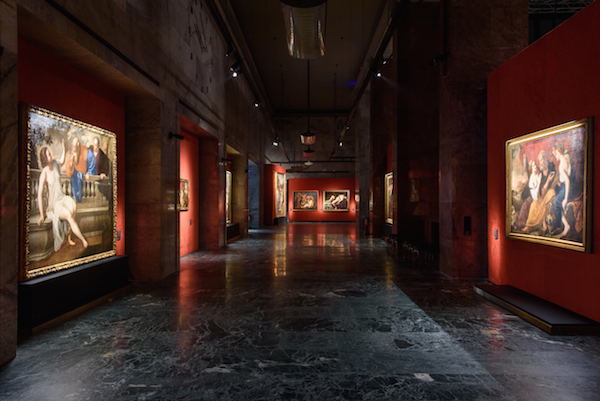
“Artemisia Gentileschi in Naples” Courtesy of the Italian Galleries
Read also:
• At Palazzo Blu “Christ and the Samaritan woman at the well” by Artemisia Gentileschi
• Artemisia Gentileschi’s “Caritas Romana” found in Austria
• A new painting by Artemisia Gentileschi enters the collection of the National Museum of Art in Oslo
• The Getty Museum acquires “Lucretia”, the rediscovered painting by Artemisia Gentileschi
• The National Gallery acquires a rare self-portrait by Artemisia Gentileschi

